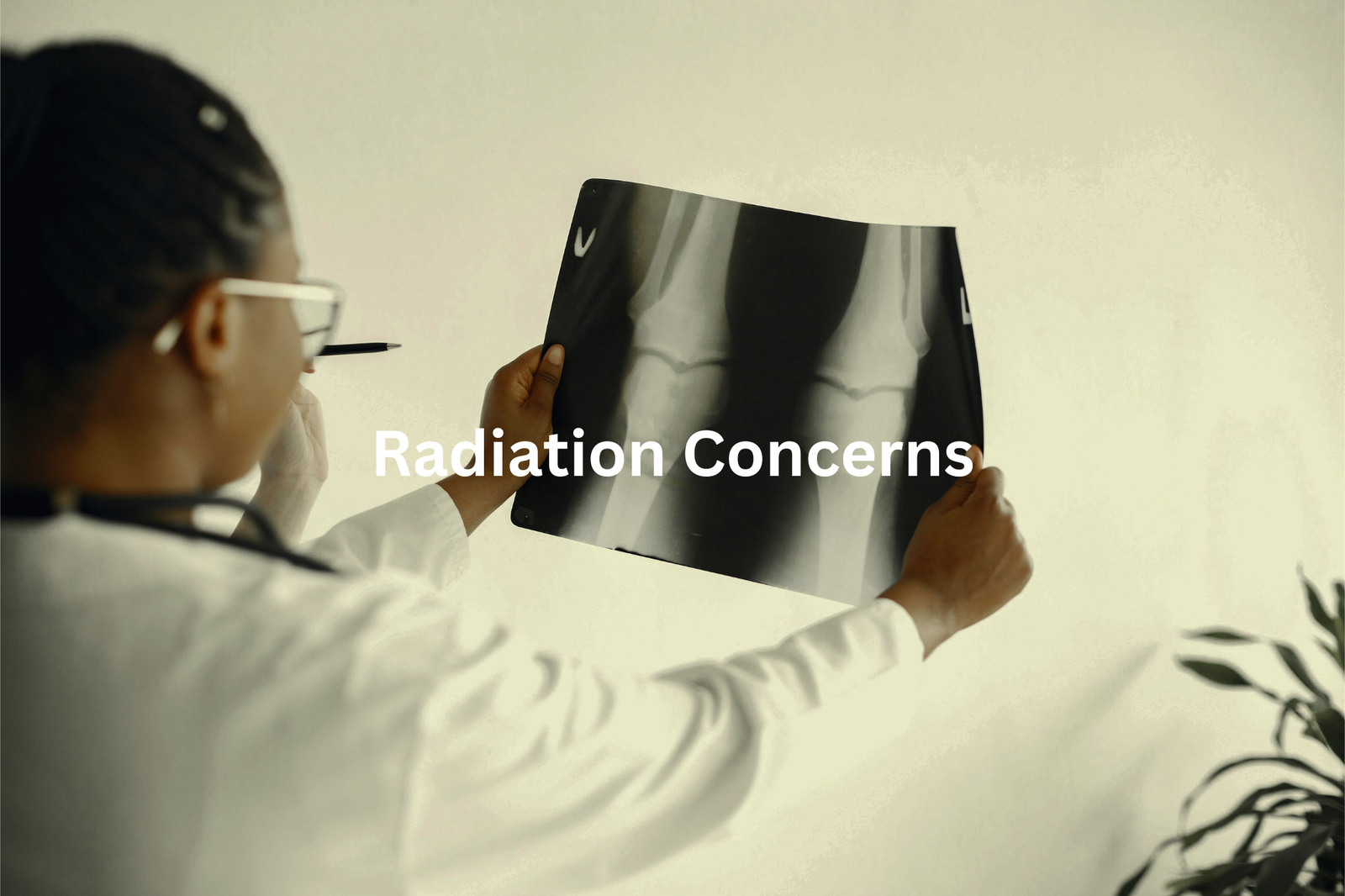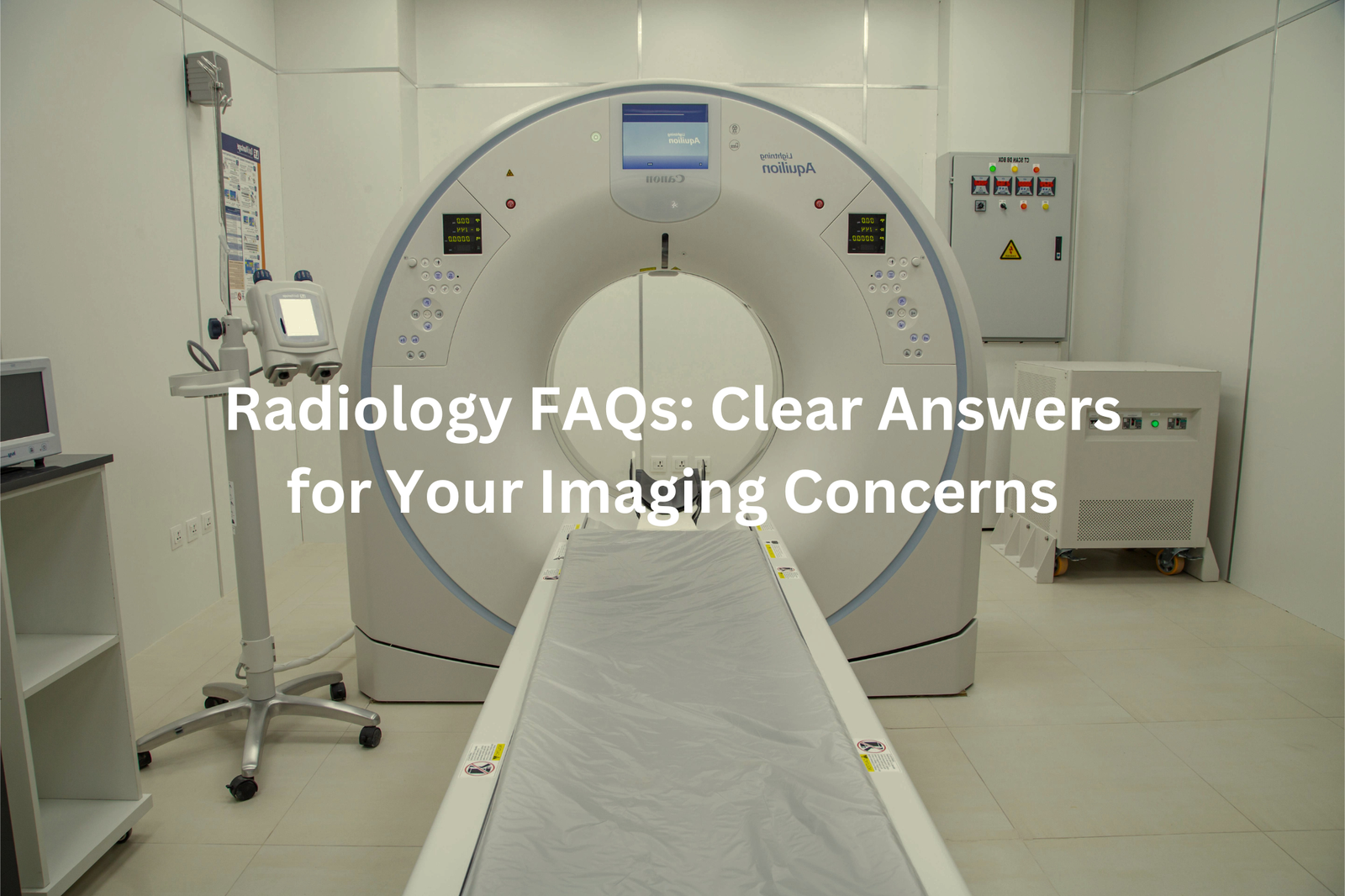Radiology FAQs: 90% of patients worry before scans. Read on for the facts and answers to your top CT and MRI questions, helping you feel more at ease.
Radiology FAQs answer many questions people have. If you’re feeling nervous about an imaging test like a CT scan or MRI, don’t worry, you’re not alone. In fact, 90% of patients feel anxious before these tests. Common questions include: What happens during the scan? Is it safe? How long does it take?
Remember, these tests help doctors see inside your body to find problems. So, it’s normal to have concerns. If you want to know more about imaging tests and what to expect, keep reading. Understanding can help ease your worries and keep you calm.
Key Takeaway
- Patients often have safety concerns about radiation during imaging tests.
- Preparation for radiology tests can vary depending on the type of scan.
- Knowing what to ask your radiologist can help ease your mind.
Radiology FAQs
Radiology is like looking inside the body without needing surgery. Tests like X-rays, CT scans, and MRIs help doctors see what’s going on inside. It’s pretty amazing how these machines can show so much detail.
For patients, though, it might feel a bit strange or even scary. An X-ray is super quick—just a few minutes. CT scans and MRIs take longer, maybe 15 to 60 minutes. MRIs can be noisy, but they don’t hurt. CT scans are like slicing a loaf of bread—you see each layer.
Most tests don’t involve needles, but if they use contrast dye (to make images clearer), the staff will explain everything first. No surprises.
If you’re going for a scan, wear comfy clothes, stay still, and ask questions if you’re unsure(1). Radiologists are there to help. These tests might seem like magic, but really, they’re just clever science doing its job.
Common Radiology Questions
Walking into a radiology department might feel a little strange, like stepping into a place you’ve never been before. Patients often have lots of questions, which makes sense—it’s not something most people do every day(2).
A CT scan? That’s a fancy X-ray that takes lots of pictures from different angles and puts them together, like looking at a loaf of bread slice by slice. An MRI? It’s a bit different—no radiation, just magnets and radio waves creating super-detailed images of your insides. And yes, X-rays and CT scans do use radiation, but it’s a small, controlled amount.
The staff here know it can feel a bit scary. I remember a mum asking if her CT scan would hurt. The tech smiled and said, “Not one bit.” She left looking way more relaxed. If you’re unsure, just ask. Whether it’s about the test, the time, or even your clothes—they’re there to help.
Patient Concerns in Radiology

Some people walk into imaging centres with questions they’re too nervous to ask, like, “Will the radiation harm me?” or “What if I’ve got metal in my body?” The machines can seem intimidating, but it’s okay to ask questions.
Here’s the basics:
- Radiation levels are low(3). A chest X-ray uses about 0.1 millisieverts (mSv), which is similar to ten days of natural background radiation.
- Metal implants are important to mention. MRI machines use strong magnets, so always tell your doctor if you’ve got metal in your body.
- Most scans are painless. CTs, X-rays, and MRIs are designed to be as comfortable as possible.
I once saw a patient ask if her earrings needed to come off. The radiographer said, “Only if they’re magnetic.” She was relieved. If you’re unsure about anything—metal, safety, or even what to wear—ask your doctor. It’s better to feel prepared.
Imaging Myths Debunked
Medical imaging can sound scary, but it’s not always what people think. Sitting in a clinic once, I heard a man ask, “Do MRIs have radiation?” The receptionist calmly replied, “Nope, just magnets and radio waves.” And she’s right.
MRIs don’t use radiation at all. They rely on magnetic fields and radio waves to create images. Ultrasounds? Same deal—no radiation, just sound waves. X-rays and CT scans, on the other hand, do use radiation, but the doses are small and carefully managed. For example, a chest X-ray gives about 0.1 millisieverts (mSv)—similar to 10 days of natural background radiation. A CT scan of the abdomen? Around 8 mSv, roughly three years’ worth of natural exposure.
If you’re worried, ask your doctor. Could an ultrasound work instead? Is the scan really needed? The more you know, the better choices you’ll make. My advice? Don’t fear the machines—fear bad information.
Radiation Concerns

The word “radiation” can make people nervous. I once heard a man in a waiting room ask his wife, “Is this really safe?” She just nodded, unsure. It’s a common worry, but here’s what you should know.
Most medical imaging uses very low doses of radiation. A chest X-ray, for example, gives you about 0.1 millisieverts (mSv)—the same as ten days of natural background radiation. A CT scan is higher, around 8 mSv for an abdominal scan, which is like three years of natural exposure.
Doctors don’t order these tests lightly. They weigh the risks and benefits carefully. And while there’s some risk, the benefits often save lives. I knew someone who avoided a mammogram for years out of fear. When she finally went, it caught cancer early.
If you’re worried, ask your doctor. Alternatives like ultrasound or MRI don’t use radiation. But remember, imaging often finds problems early—when they’re easier to fix.
Safety Questions
Safety questions pop up a lot before medical tests. People might sit in the waiting room, fiddling with their appointment cards, wondering what happens after. Like, “Do I need to drink more water?” That depends, really—especially if they’ve used a contrast agent during the scan.
Contrast agents (or dyes) are used in some scans like CTs or MRIs. They make tissues easier to see. CT scans often use iodine-based dyes, while MRIs use gadolinium-based ones. Your kidneys clear these out, so drinking extra water—about a litre—can help flush them faster.
For tests like X-rays, though, there’s no dye and no aftercare. Just go about your day. If you’re pregnant, breastfeeding, or have kidney problems, tell your doctor beforehand. Mention allergies or meds too.
And remember, no question’s too small. Ask away. It’s your health, and the staff are there to help. Simple: ask, hydrate if needed, and relax.
How Radiology Works
Sources: RANZCR (Royal Australian and New Zealend College of Radiologists.
Radiology might seem like magic, but it’s just clever science. Machines that can see inside your body? That’s pretty cool when you think about it.
X-rays are the simplest. They use a quick burst of radiation to snap a picture—like checking for broken bones. CT scans take it further, capturing loads of X-ray images in thin slices to build a 3D view. It’s like stacking layers of a cake, but for your body.
MRIs are different. No radiation here—just magnets and radio waves. They’re great for soft tissues, like your brain or muscles. I had one once, and it sounded like a construction site, but imagining the magnets mapping me out made it less nerve-wracking.
Ultrasounds? They use sound waves. You’ve probably seen those baby scan pictures—same idea. The trick? Stay still, listen to instructions, and ask questions. Understanding the process makes it less daunting. Trust me.
Preparation FAQs
Getting ready for a radiology appointment is like packing for a trip—you want to be prepared. A few small steps can make a big difference.
Some tests need special prep:
- Fasting: For abdominal ultrasounds, you might need to skip food for 6–8 hours. This clears the view for better images.
- Drinking water: Pelvic ultrasounds often need a full bladder. It’s uncomfortable, sure, but it helps the tech see things clearly.
- Clothing: Wear loose clothes without metal. Zippers or jewellery can mess with scans, especially MRIs.
Once, a patient asked why fasting mattered for a CT scan. It’s not just a rule—the contrast dye works better on an empty stomach.
Always check the clinic’s instructions. Some tests even ask you to skip deodorant (yes, for mammograms). If unsure, call and ask. These steps aren’t just rules—they help get the clearest images, which means better answers for you.
Cost-Related Radiology FAQs
Money questions come up a lot before scans. People ask, “Is it bulk billed?” or, “How much will I pay?” These are fair questions. They matter.
If your scan is bulk billed, Medicare (or your private health fund) covers the cost. No payment needed. But it’s not always that easy. Some clinics charge a gap fee—that’s the difference between what Medicare pays and the clinic’s fee. It might be small, but it can still surprise you.
Here’s how to avoid surprises:
- Call the clinic or your doctor. Ask about costs.
- Check if Medicare covers your test. Some need special referrals.
- Look for bulk-billing clinics, especially for common scans like X-rays.
I once met a woman who had to cancel her scan because of a $200 fee she didn’t expect. She said, “I wish they’d told me earlier.” Always ask for a patient fact sheet. A quick call can save stress.
What to Ask a Radiologist
Standing in a clinic waiting room, you notice people looking unsure. Some stare at forms, others at the floor. It makes you wonder—how many actually ask the radiologist their questions?
It’s not about being rude. It’s about understanding. Even simple questions can help, like:
- What’s this test for? Diagnosing? Monitoring?
- Are there risks? Even low-dose scans like X-rays have some.
- When will I get results? Waiting can be stressful.
I once met a man who had a scan but didn’t know why. He waited two weeks for results, worrying the whole time.
Radiologists aren’t scary. They’re the ones who read your scans (like CTs or MRIs) and help your doctor figure things out. They might not give you answers right away, but they’ll explain the process if you ask.
Write questions down beforehand. Ask them to repeat or simplify if needed. Knowing what’s happening can ease your mind. a little. So, speak up. You’ll leave feeling a bit more in control.
FAQ
What is a ray test?
A ray test, also known as an X-ray, is a common imaging procedure that uses small amounts of radiation to create images of the inside of your body. Ray tests can help your doctor diagnose and monitor various health conditions.
What should I do if I feel free to ask questions?
Feel free to ask your referring doctor or the radiology staff any questions you have about your imaging test, such as the purpose, preparation, process, and potential risks. They are happy to provide information to help you feel comfortable and understand the procedure.
How do I book an MRI scan?
To book an MRI scan, you’ll need a referral form from your doctor. Once you have the referral, you can contact a radiology clinic to schedule your appointment. The clinic can provide guidance on any preparation required and let you know the estimated wait time.
What is the wait time for an appointment?
The wait time for a radiology appointment can vary depending on the type of test, location, and demand. Many clinics offer online booking to help reduce wait times. If you have a time-sensitive need, let the booking consultants know so they can accommodate you as soon as possible.
Do I have to pay a pocket fee?
The cost of radiology tests can be covered by Medicare or your private health insurance, but you may still have an out-of-pocket expense, known as a “pocket fee.” The amount you pay will depend on factors like the type of test and whether you have a healthcare card.
How do I find a radiology clinic that offers bulk billing?
Many radiology clinics offer bulk billing, where they can directly bill Medicare for your imaging services. This means you won’t have to pay any out-of-pocket expenses, as long as you have a valid Medicare card. You can search for bulk billing radiology clinics in your local area.
What is the process for a radiology referral?
To get a radiology referral, you’ll need to visit your referring doctor. They will provide you with a referral form that includes details about the type of imaging test you need. You can then take this referral to a radiology clinic to schedule your appointment.
How long will it take to get my test results?
The turnaround time for receiving your radiology test results can vary, depending on the type of exam and the clinic’s workflow. Most test results are available within a few business days, but more complex imaging studies may take longer. Your radiology clinic can give you a better idea of the expected timeframe.
Conclusion
Radiology FAQs can help calm your concerns about imaging tests. Patients usually have questions about safety, how to prepare, and costs. Knowing what to ask can make your visit easier. If you feel unsure, just ask the friendly staff at the radiology clinic. They’re there to help you with any worries you might have. A little knowledge can make a big difference, so don’t hesitate to reach out and get the answers you need.
References
- https://www.mdanational.com.au/advice-and-support/library/articles-and-case-studies/2017/07/radiology-faqs
- https://www.directradiology.com.au/patient-information/frequently-asked-questions
- https://www.safetyandquality.gov.au/sites/default/files/2022-08/literature_review_-_safety_and_quality_in_diagnostic_imaging.pdf




